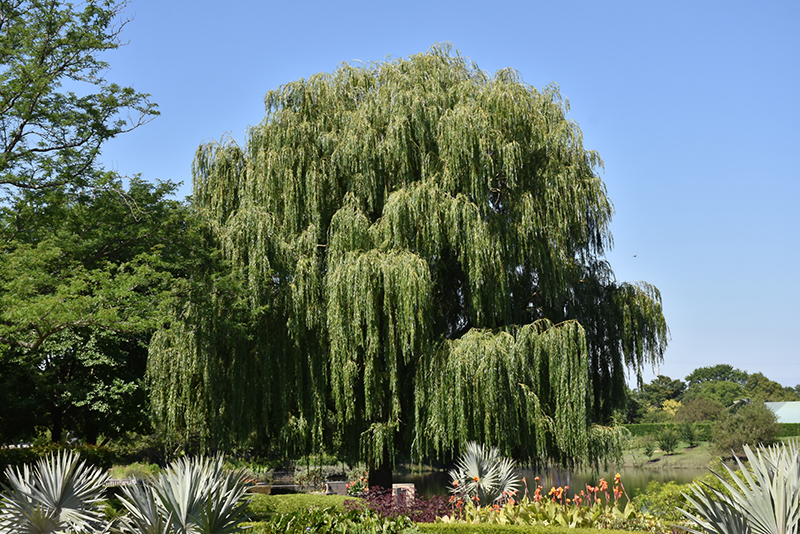* This is a "special order" plant - contact store for details
Height: 50 feet
Spread: 50 feet
Sunlight:
![]()
Hardiness Zone: 5b
Other Names: Weeping Willow
Description:
A distinctive tree with pendulous branches hanging loosely off a graceful, broad, rounded crown; tends to drop branchlets, and has an aggressive root system, so do not plant near homes; use as a solitary in a large landscape area
Ornamental Features
Babylon Weeping Willow is primarily valued in the landscape for its highly ornamental weeping form. It has rich green deciduous foliage. The serrated narrow leaves turn yellow in fall.
Landscape Attributes
Babylon Weeping Willow is an open deciduous tree with a rounded form and gracefully weeping branches. Its relatively fine texture sets it apart from other landscape plants with less refined foliage.
This is a high maintenance tree that will require regular care and upkeep, and is best pruned in late winter once the threat of extreme cold has passed. Gardeners should be aware of the following characteristic(s) that may warrant special consideration;
- Messy
- Invasive
- Insects
- Disease
Babylon Weeping Willow is recommended for the following landscape applications;
- Accent
- Shade
Planting & Growing
Babylon Weeping Willow will grow to be about 50 feet tall at maturity, with a spread of 50 feet. It has a low canopy with a typical clearance of 2 feet from the ground, and should not be planted underneath power lines. It grows at a fast rate, and under ideal conditions can be expected to live for 60 years or more.
This tree should only be grown in full sunlight. It is quite adaptable, prefering to grow in average to wet conditions, and will even tolerate some standing water. It is not particular as to soil type or pH. It is highly tolerant of urban pollution and will even thrive in inner city environments. This species is not originally from North America.
* This is a "special order" plant - contact store for details



